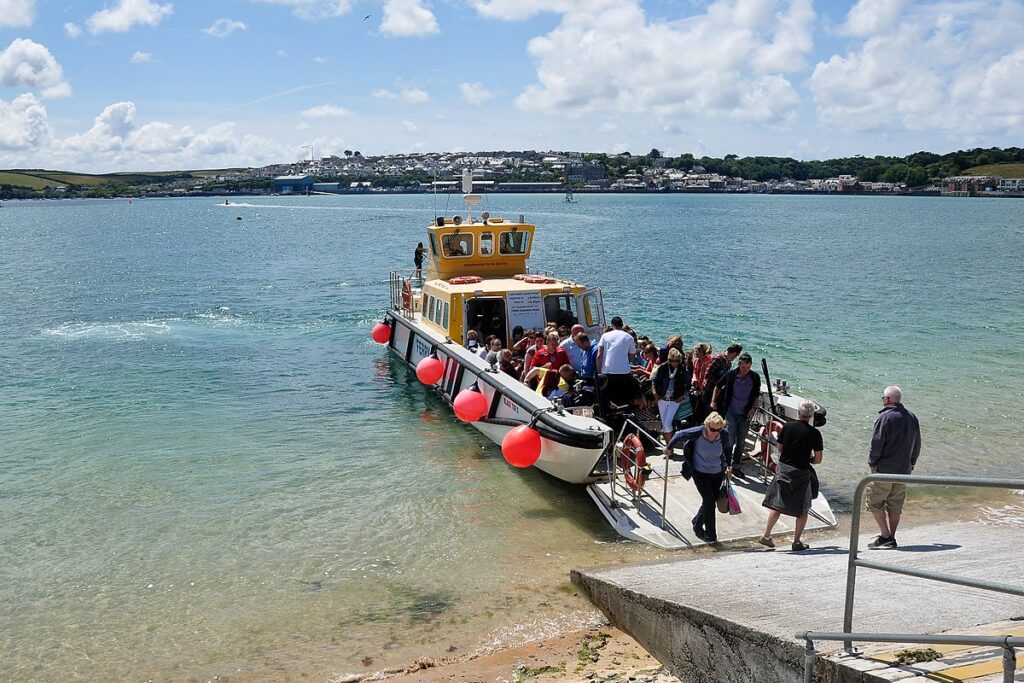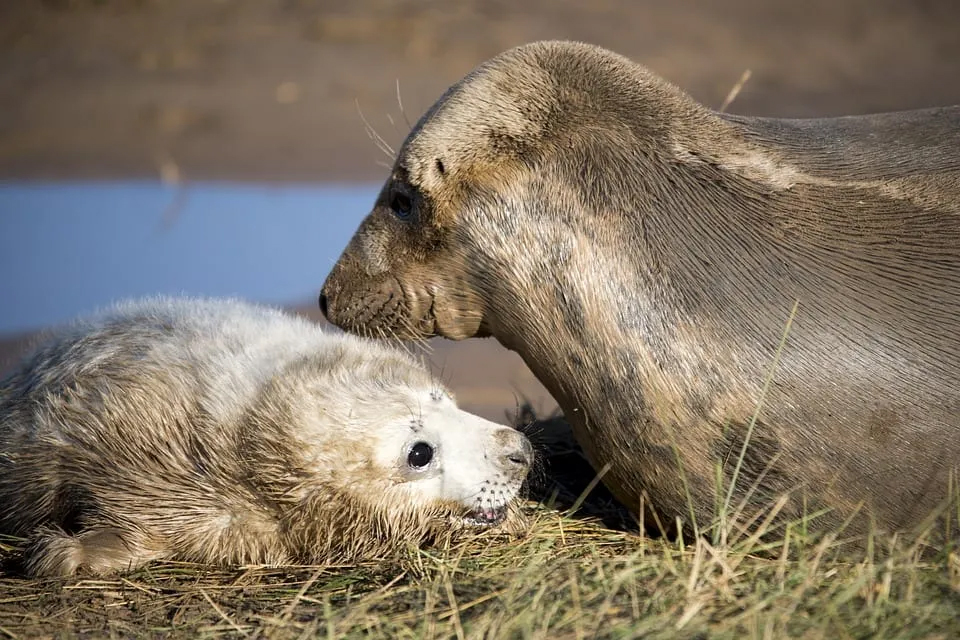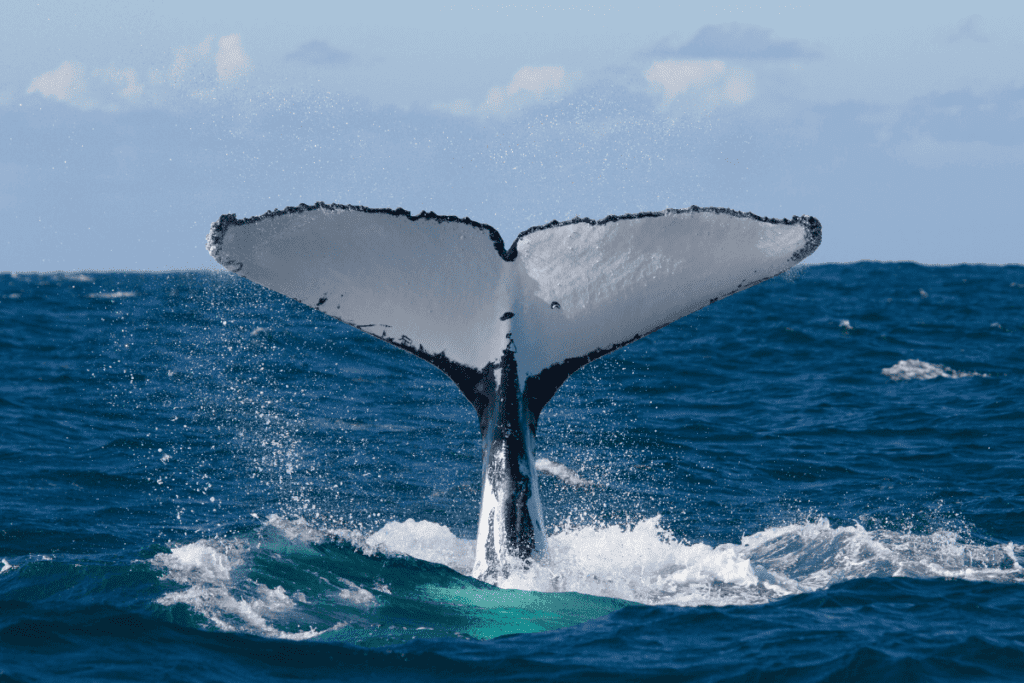Introducing Cornwall’s Seagrass Meadows
Seagrass bed ecosystems are found in shallow, coastal waters and are often referred to as ecosystem engineers. Seagrass beds are the only flowering plant that grows in the marine environment, providing numerous benefits not only to the environment but also to local communities. Their growth provides a habitat for different species and plays a key role in water filtration, nutrient cycling, and carbon sequestration.
Types of Seagrass Species
In the UK, there are four main seagrass species: Common Eelgrass (Zostera marina), Dwarf Eelgrass (Zostera noltii), Beaked tasselweed (Ruppia maritima), and Spiral tasselweed (Ruppia cirrhosa).
- Common Eelgrass (Zostera marina)
Common eelgrass is the most widespread and well-known seagrass species found in the UK. It is made up of long, narrow, ribbon-like leaves that can reach 1.5 metres in length! Common eelgrass forms dense meadows in sandy and muddy sediment, such as bays, lagoons, and estuaries. - Dwarf Eeelgrass (Zostera noltii)
Dwarf eelgrass is a much smaller seagrass species, with leaves typically only reaching 15-30 centimetres in length. Similar to common eelgrass, dwarf eelgrass is found in sandy and muddy sediments, but can withstand more exposed locations. - Beaked Tasselweed (Ruppia maritime)
Beaked tasselweed grows in soft sediments in sheltered, shallow, coastal waters, mainly in brackish waters. It is made up of slender stems up to 40 centimetres long. - Spiral Tasselweed (Ruppia cirrhosa)
Spiral tasselweed grows in freshwater habitats, such as lakes. It is thread-thin and produces two tiny flowers. As the flowers develop, the plant curls into a neat spiral, hence the name Spiral tasselweed.
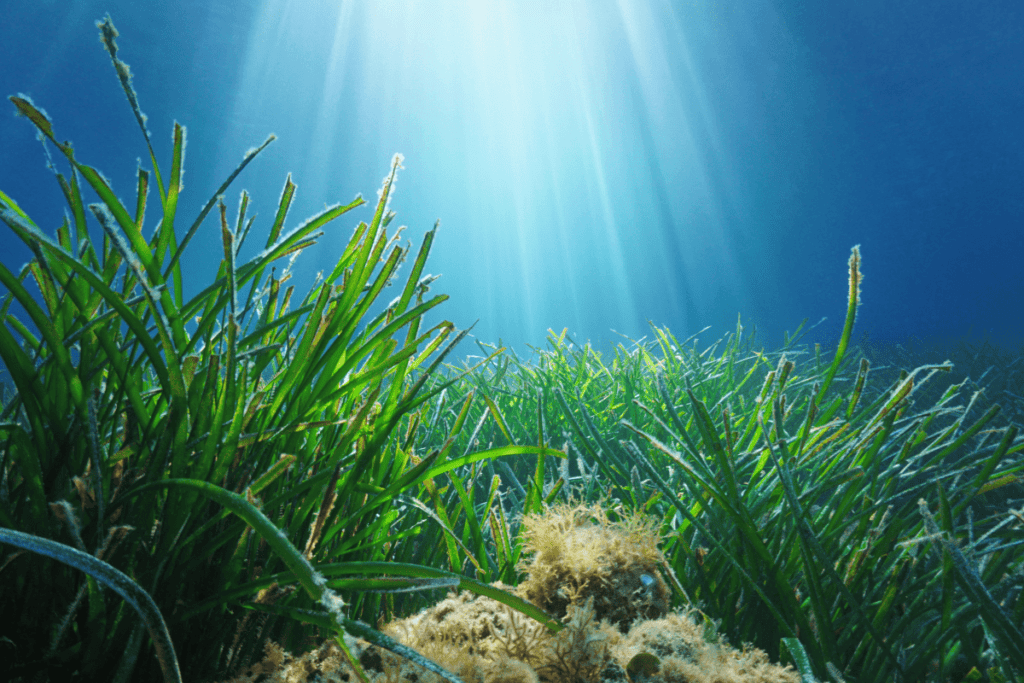
The Ecological Importance of Seagrass
Seagrass beds are incredibly valuable ecosystems that support a wide variety of species, contributing to rich and diverse ecosystems.
Seagrass bed ecosystems provide shelter, nursery conditions, food, and breeding grounds for fish, invertebrates, and marine mammals. Fish such as juvenile bass and plaice use seagrass beds as nurseries, where they find protection from predators and plentiful food.
Various invertebrates such as nudibranchs (sea slugs) also utilise seagrass for protection and food. Seagrass beds are important for wading bird species too, which feed on the invertebrates living in or on the seagrass.
Coastal Protection
Seagrass provides coastal protection by creating a natural barrier that stabilises the sediment. A dense root system helps to do this by reducing the movement of sand and mud. This coastal protection reduces the impact of erosion and storm surges by preventing the loss of coastal habitats, reducing wave energy, and limiting the impact on the shoreline.
Carbon Sequestration: Cornwall’s Blue Carbon Heroes
Seagrass beds help in the fight against climate change by sequestering carbon dioxide from the atmosphere. In fact, seagrass ranks amongst the most efficient natural carbon sinks on earth!
Seagrass only covers around 0.1% of the ocean floor, and yet it is thought that seagrass beds account for more than 10% of the ocean’s global carbon storage. This process is known as blue carbon storage, and stores carbon dioxide in the sediment for millennia.
Nutrient Cycling
Seagrass beds play a key role in nutrient cycling by acting as a natural filter, regulating levels of nutrients such as nitrogen and phosphorus. These nutrients often run off from agricultural land or urban areas and can lead to eutrophication (excess of nutrients). By seagrass absorbing and uptaking nutrients, it helps to reduce pollution and maintain water quality.
Water Quality Improvement
Seagrass beds help to filter and clean water by trapping suspended particles in the water, improving water clarity and quality. As the flow of water slows as it moves across the seagrass, this allows suspended particles to drop out of the water column and settle on the floor of the seagrass bed.
Oxygen Production
Seagrass plays a role in producing oxygen via photosynthesis. Like other terrestrial plants, seagrass takes in carbon dioxide and uses sunlight to convert it into glucose and oxygen. The oxygen byproduct is then released into the water, which helps to support a healthy environment for other organisms.
Nutrient-Rich Food Source
Seagrass provides food for many species, playing a role in supporting marine food webs. Some herbivorous fish feed directly on seagrass blades, and invertebrates (such as urchins and molluscs) feed on seagrass or the organisms living within the seagrass.
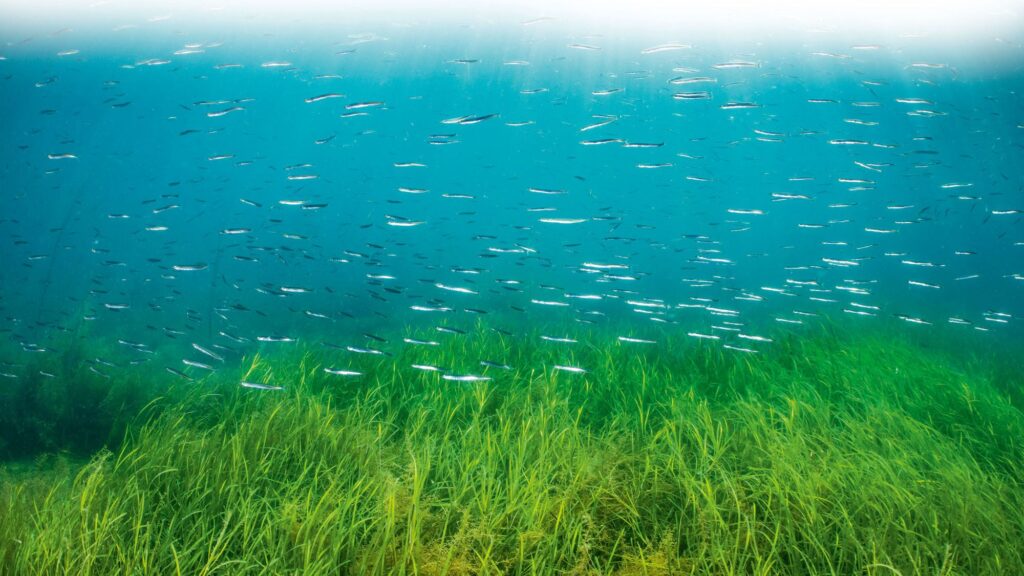
Threat to Our Seagrass Bed Ecosystems
Seagrass beds face several significant threats to their health and survival. Seagrass is particularly vulnerable to human activity, mainly because it is sensitive to environmental change and physical damage. Due to typically being found in shallow waters, seagrass beds are heavily impacted by human activity, including construction, tourism, and industrial activities.
Pollution
As seagrass rely on clear water to photosynthesise, agriculture and industrial processes can lead to runoff, reducing water clarity, blocking sunlight, and therefore reducing the ability to photosynthesise.
Climate Change
The burning of fossil fuels is accelerating climate change, which poses significant threats to our local seagrass meadows through three key mechanisms.
- Rising sea temperatures can stress or kill seagrass plants, as these species have limited tolerance for thermal variations
- Ocean acidification impairs their photosynthetic processes, reducing growth and resilience
- As sea levels rise, the depth, light availability, and substrate conditions in seagrass habitats are being altered, forcing these plants to adapt to rapidly changing environments
At Padstow Sealife Safaris, we observe these impacts firsthand during our wildlife watching trips and participate in regional monitoring efforts to track these changes along Cornwall’s coastline. Understanding these climate-related stressors is essential for developing effective conservation strategies to protect these valuable marine ecosystems for future generations.
Coastal Development
Coastal development can negatively impact seagrass by causing physical habitat destruction, fragmentation, increased sedimentation and turbidity, reduced light penetration, alteration of water flow, and introduction of invasive species that may outcompete the seagrass or the species that rely upon it.
Anchoring and Destructive Fishing Practices
Anchoring, moorings, boat traffic, and dredging can cause physical damage to seagrass by uprooting and scarring seagrass meadows. This scarring can last for a long time, often damaging the roots and rhizomes of the seagrass, making it more difficult for the seagrass to regenerate.
Seagrass Bed Conservation Projects
Dedicated seagrass conservation projects are vital for maintaining and restoring the health of not only the seagrass itself but also the wider marine ecosystem to help support biodiversity.
- Cornwall Wildlife Trust’s Seeding Change Together project, along with Seasalt Cornwall, was launched in 2022 with the aim of studying and restoring seagrass in the Fal Estuary. The three-year project is looking specifically at dwarf seagrass, trialling new restoration methods in the hope of expanding the seagrass meadow in the Fal-Ruan nature reserve.
- Project Seagrass is focused on delivering change to the world’s seagrass, alongside promoting the sustainable use of seagrass ecosystems. The organisation aims to be a global champion for seagrass ecosystems, supporting well-mapped, thriving seagrass ecosystems; facilitating pervasive recognition of seagrass ecosystems for people and the planet and delivering conservation and restoration action in an era of climate change.
Conclusion
A seagrass bed ecosystem provides a multitude of services that benefit not only marine life, but also the coastline and humans. However, these seagrass beds are under threat from human activities and environmental change. Continued conservation efforts, public engagement, and scientific research are key to protecting and restoring these invaluable underwater ecosystems for future generations.
What is seagrass?
Seagrass is the only flowering marine plant. It grows underwater, in shallow, coastal water environments. Unlike algae, seagrass has a root system, a stem, and leaves.
Why are seagrass beds important?
There are so many reasons why seagrass beds are important! Seagrass acts as a sink for carbon dioxide removing it from the atmosphere, it provides habitat for a multitude of species, it improves water quality, and also protects coastlines from erosion by stabilising the seabed.
What threats do seagrass beds face in Cornwall?
Seagrass beds are mainly threatened by human activities such as pollution, boating, coastal development, and climate change.
Can I see seagrass beds while diving or snorkeling in Cornwall?
Yes! You can encounter seagrass beds in Cornwall while diving or snorkeling, especially in shallow, sheltered areas with calm waters.
Why should I care about seagrass beds in Cornwall?
Seagrass beds are important for marine life but also for the health of the planet. Seagrass beds help to maintain biodiversity, fight climate change, and protect our coastlines and local communities.
